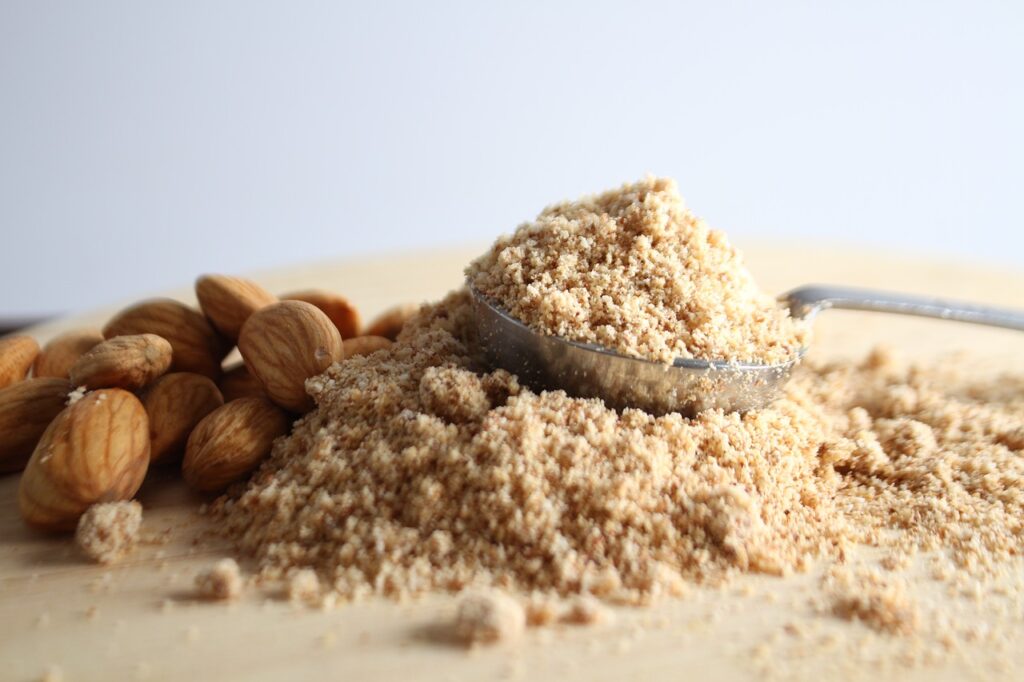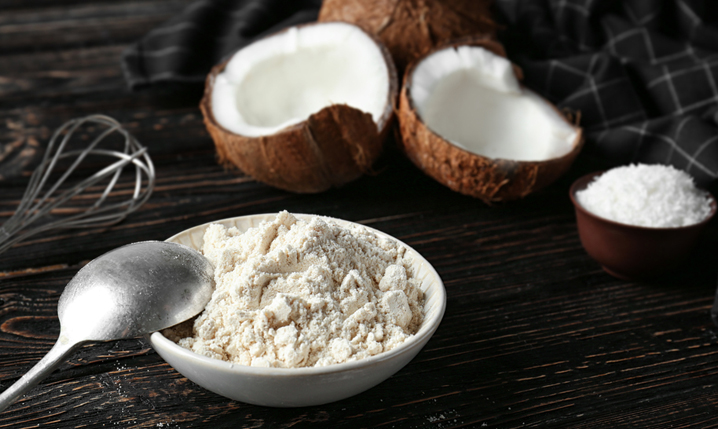Brown rice flour is made from milled whole grain brown rice. It is a popular gluten-free alternative in baking.
Rice flour originated in Asia, where it is a staple in kitchens from Japan to Nepal. Brown rice flour, which is specifically made from whole grain rice, is just one of the many rice flour varieties. Other types include white rice flour, glutinous rice flour, and even green rice flour. Brown rice flour is used most often in savory dishes, thanks to its somewhat nutty flavor.
Although brown rice flour is an everyday staple in many cuisines, sometimes it can be challenging to find it at your local grocery store.
Here are some substitutes for brown rice flour.
1. Oat Flour
Oat flour is made by grinding up oats for gluten-free flour. You can buy it at most grocery stores or make it yourself by grinding up rolled oats in a food processor. Like rice flour, oat flour is gluten-free and highly nutritious. It is low in calories but has more vitamins and minerals than brown rice flour, making it an even healthier alternative.
Oat flour works well as a substitute for brown rice flour because they have similar textures and tastes. Like brown rice flour, oat flour has a nutty, earthy flavor that works well in bread and other savory baking dishes.
2. Almond Flour

Almond flour is another popular gluten-free alternative that can substitute for slightly rarer brown rice flour. True to its name, almond flour is made from ground-up almonds. Originally a staple of Italian baking, it is now a popular substitute in many gluten-free recipes.
Like brown rice flour, almond flour is gluten-free and packed with nutrients. It has a similar nutty taste and texture, and you can easily make a 1:1 substitution instead of engaging in complex calculations. Although most people with nut allergies can safely eat almonds, double-check before serving someone a dish made with almond flour.
Almond flour is also more expensive per pound than rice flour, so if you are on a budget, look for a different substitution.
3. Coconut Flour

Coconut flour is another gluten-free flour growing in popularity. It is made from shredded and ground-up coconuts. Just like brown rice flour, coconut flour is packed with nutrients such as fiber and protein, making it a good choice if you are health-conscious.
However, coconut flour is dryer than rice flour, so you need to be careful with your ratios when making this substitution. Use about 3/4 cup of coconut flour per one cup of rice flour and increase your fat content to counter coconut flour’s higher absorbency. You should also be ready for coconut flour’s sweeter taste.
4. Sorghum Flour

Sorghum flour is made from ground sorghum, a seed that provides a rich, nutty flour. It is gluten-free and considered one of nature’s superfoods. Sorghum flour is high in nutrients such as antioxidants, which lower your risk of high blood pressure and heart disease. Its robust texture makes it an excellent substitute for wheat flour as well since it helps breads and other baked goods retain their structure.
Sorghum flour has a very similar taste and texture to brown rice flour. Instead of making complicated calculations, you will only need to make a 1:1 substitution. However, sorghum flour is even rarer than brown rice flour and will probably be hard to locate in your average grocery store. If you are looking for a brown rice flour substitute because it is not available in your area, this probably will not solve your problems.
5. Potato Starch
Potato starch is a white, starchy powder extracted from crushed potatoes. While many of the previous ingredients are excellent substitutes for brown rice flour in baking, potato starch is the perfect substitute for brown rice flour when it comes to frying, particularly if you want a gluten-free alternative.
Just like brown rice flour, potato starch does not absorb oil when you place it in the fryer. This means that when you coat food in either of these ingredients when preparing for the fryer, it will remain crispy. However, potato starch is not a good substitute for brown rice flour in baking. It also has a more neutral taste.
